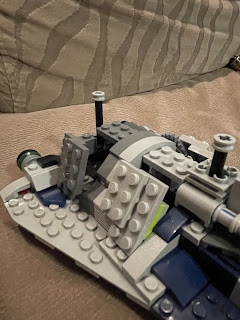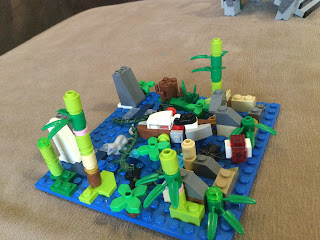Wednesday, 29 December 2021
ArrowHead
Sunday, 19 December 2021
Flood Rescue Vehicle
When I received news about the recent floods in Malaysia, I decided that there was only one thing to do: build a Flood Rescue Vehicle.


Thank you for reading my blog.
Friday, 10 December 2021
Hexabyte
Monday, 22 November 2021
The Phoenix
Tuesday, 12 October 2021
Observatory
During an afternoon when I had nothing to do, I decided to build something technical with lots of gears using LEGO. And what could be more technical than a proper observatory that could be angled to look at different constellations?
One side of the observatory displays the set of gears that I used; it looks simple and satisfying. This section of the observatory is simply used to angle the radio dish up and down and the gears at the side merely serve the purpose of slowing down the motion.
Saturday, 2 October 2021
Crimson Lightning
During one of my building challenges with my dad, I was tasked to build an emblem. Instead of going with a standard pattern arranged on a plate, I decided to use a different way. Hence, Crimson Lightning was created.


Tuesday, 28 September 2021
The SoundMech
Tuesday, 14 September 2021
Mech
Monday, 6 September 2021
Plight of the Mad Scientist
This is one of my favorite creations. I call it "Plight of the Mad Scientist". Because of how this model was built, the post will be told in "story form", with notes about the building process along the way. Enjoy!
The Mad Scientist has achieved what everybody thought was not possible; he built a teleportation machine! It consists of a portal frame with a generator. The other side opens up to the wide sea (it's the mad scientist's idea) and there's a rock with some greenery on the other side. (just to create a seamless transition from land to sea; didn't work out too well)
Note:
This is the generator. It took quite a long time to make and I'm really happy with it. The grey side (on the right of the picture) uses a technique called greebling. That's using lots and lots of random pieces of the same color on one surface to add detail to it.
The other side: Mainly red-hot grilles to give an engine effect, but there's an on button partially hidden by the angle. Now, back to the story...
Unfortunately, the government has heard of the Mad Scientist's invention (how? I have no idea-) and wants to seize it for safekeeping.
So, the government has sent one of their best officers (uh oh, he looks angry) in his high-tech sub to secure the portal that the Mad Scientist has created. He has pulled out his radio and is either reporting his status or calling for backup; we'll never know!
Note: The submarine turned out pretty nice (it was modified from one of my earlier scrapped builds, a mini battleship) and I've used curved and sloped pieces to give it a techy look. The green windscreen looks amazing too. (note that one missile is missing!)
But the Mad Scientist isn't going to let that happen and he's sent his faithful robots to deal with the government official. They wield unlikely weapons such as drills, dynamite, and even a fire extinguisher!
Thursday, 26 August 2021
Hidden World




















































